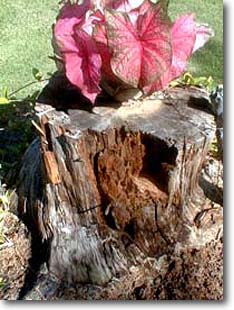
Public Education and Outreach
Coal |
Petroleum |
Natural Gas |
Oil Sands |
Oil Shale |
Biomass and BioFuels |
Hydrogen |
Nuclear |
 |
Public Education and Outreach |
|||||||
|
||||||||
Coal
|
Once Upon A Tree: The Origins Of Coal
Coal is one of the fossil fuels (along with crude oil, natural gas, oil shale and tar sands). The name fossil fuel invokes the notion that at one point in time coal was alive. Well, almost, the coal precursors, mostly the plants, were alive growing in the sunshine. We know this because we can find fossil imprints of leaves and branches in coal, amber containing flies and other organic material preserved —(Jurassic park audio), bark imprints in the coal, coalified trees, coalified roots, and biomarkers which are chemical compounds produced by living organisms, etc.
Carbon cycle is the basis to understand how the living matter (plants and animals) breaks down and decays, creating the organic basis for fossil fuel formation.
Recall that photosynthesis is the process by which plants absorb the sunlight, store it, and convert it into energy to grow and survive. The plant takes in Carbon Dioxide and Water, stores and uses the glucose to grow and live, then releases Oxygen back into the environment.
When plants die, this process simply works in reverse. Walking through almost any forest is the best way to witness the decaying process in action, where the ground is generally strewn with dead and decaying leaves, limbs, branches, and sometimes entire trees.
Normally the process of growth and decay occurs but in the formation of the fossil fuels the normal decay path did not occur. Instead the organic material was preserved somewhat. The key is the absence of oxygen, which is necessary for the normal decay process. Bogs are ideal for this to occur so in swamps (a particular type of bog) the plant material dies but was protected from the normal decay process by the stagnant water, which is low in oxygen. Decay does still occur but the bio-resistant material (the chemical structures which are resistant to the bugs dining in the swamp) is enriched. Over long time periods considerable quantities of organic material might be buried in the swamp which might eventually form the material peat.
 Source: JPMPhotosynthesis and decay in the same picture! Splendid!
Source: JPMPhotosynthesis and decay in the same picture! Splendid!Peat bogs are sources of fuel in certain locations such as Ireland. The brown peat is cut into slabs with a spade and allowed to dry in the sun, before being combusted to heat the homes of the Irish crofters. As the peat is aged and buried deeper in the ground the slow coalification process continues and eventually transforms peat into a low rank lignite coal. This brown/black coal is a young coal and so with further maturation, long time periods and warmer temperatures (within the earth) and higher pressure as the coal is buried deeper, produces the other ranks of coal: subbituminous, then bituminous coal. If there is uplifting then anthracite coal can be formed because of the high temperatures and stresses involved.
During the various stages other materials such as mineral might be washed into the bogs, mud will form clay which will turn to shale over the years. Or alternatively the organic material might have contained inorganic material (the ash left behind from a wood fire). Thus coal is not pure organic material, and as the coalification process is over such long time periods we have different ranks of coal in the US coal of different qualities.